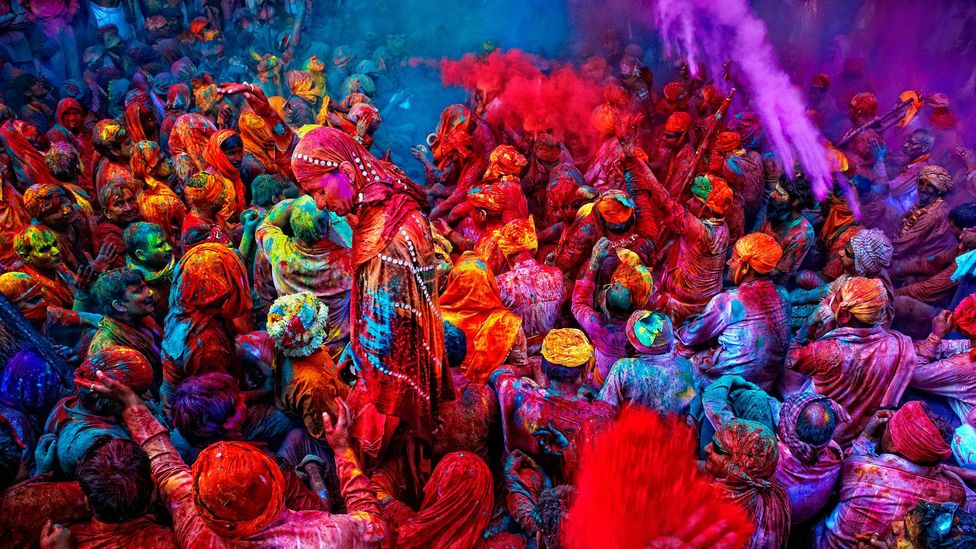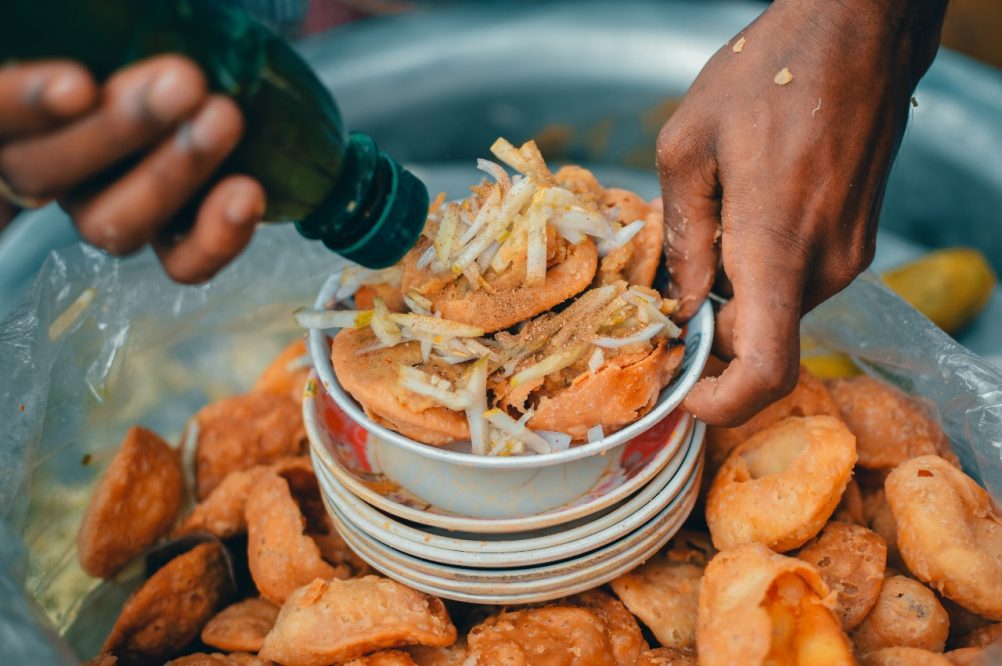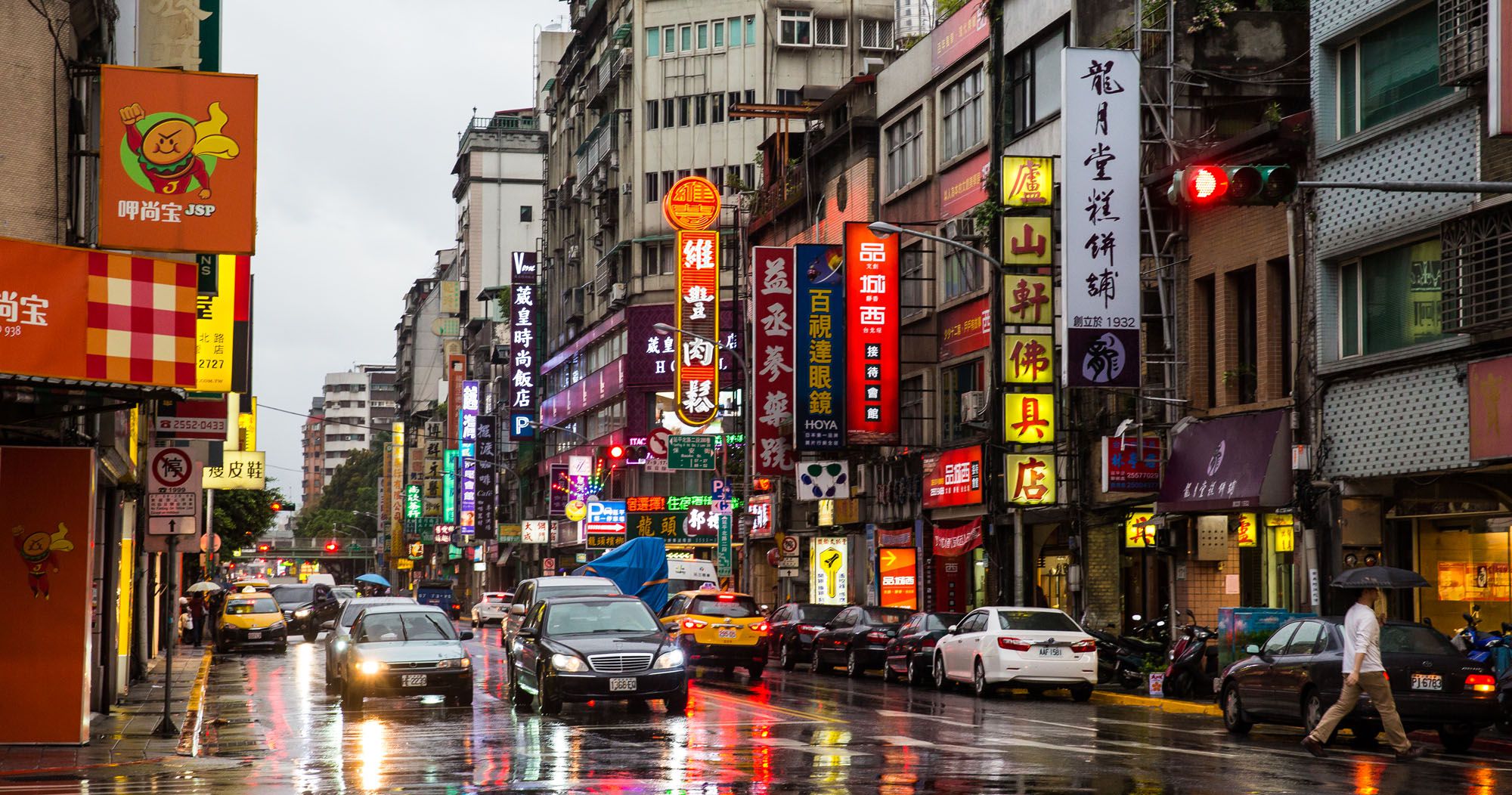Indian Festivals: Color, Lights, Painted Elephants & Poo?
India is a land of festivals, and it is said that over a thousand take place every year – some celebrated religion-wide, some at a state level, others just within a local community – but all are welcomed with big celebrations in a true manifestation of the country’s rich culture, multiple religions and traditions.
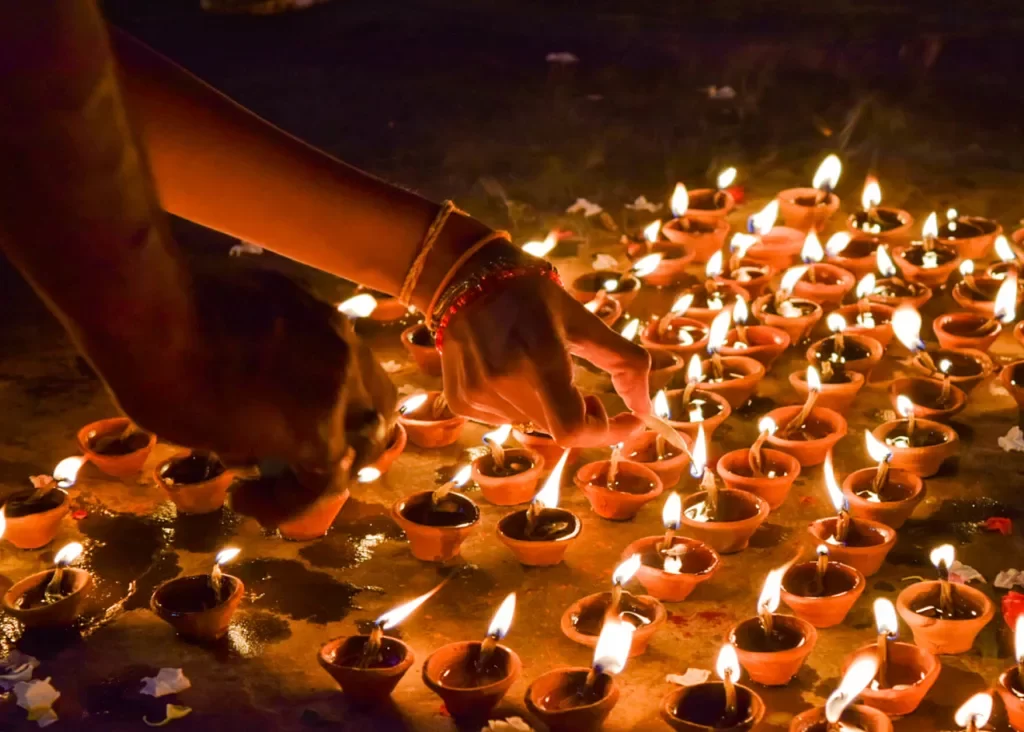
Diwali
India’s ‘Grand Festival of Lights’ is the biggest, most prominent and most important Hindu festival in India. It falls in October or November on the new moon and is a celebration of the triumph of good over evil (light over darkness), which lasts for five days. Houses are decorated with fancy lights, clay lamps, candles, and Ashok leaves. People wear new clothes, participate in family puja, burst crackers, and share sweets with friends, families, and neighbors.
The festival marks the day of the return of Lord Rama, along with his wife Sita and brother Lakshmana, after a long exile of fourteen years.
Gorehabba
In the village of Gumatapura in southern India, the wacky Indian Poo Festival marks the end of Diwali. This is a unique tradition that’s not for the fainthearted. During a day-long event, the villagers throw cow poo at each other. Many Hindus believe cows and everything they produce is sacred and purifying, and some believe that the animals’ poo has health benefits.
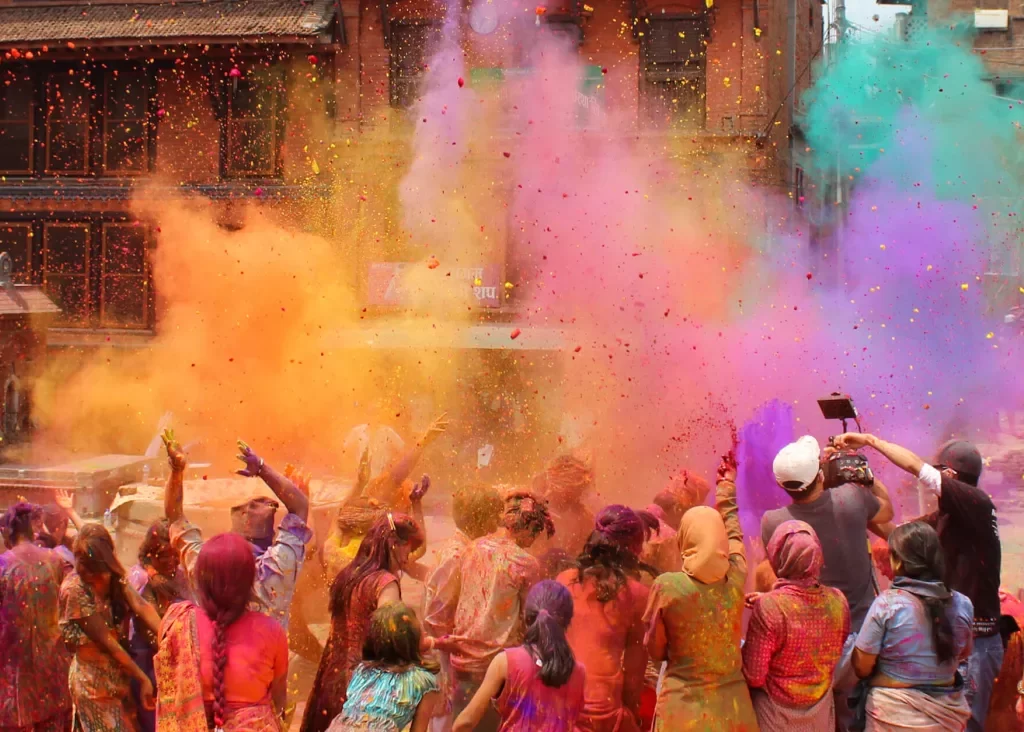
Holi
Also known as the Indian Color Festival, Holi is another event that celebrates the triumph of good over evil, in this case, the defeat of the demoness Holika and the coming of spring. This vibrant festival of colors takes place over two days, during the full moon in March. On the eve of the Holi Festival India, under the light of the full moon, people make huge Holika bonfires and burn effigies of the demoness to celebrate her defeat.
The next day, the entire country heads to the streets for a giant colored-powder-and-water “fight,” with some carrying water guns and colored water-filled balloons. The color fight represents the joy of victory among people of all classes. Holi is one of the famous festivals of India, celebrated with a lot of enthusiasm and joy. The most vibrant celebrations can be seen in the North Indian states.
Navratri
This is a nine-night festival in honor of three goddesses. The first three nights focus on the goddess Durga to remove the barriers and evils in our bodies, the second three nights focus on the goddess Lakshmi, goddess of wealth and good fortune, and the last three nights on goddess Sarasvati, goddess of knowledge, music, art, speech, wisdom, and learning.
During this festival, people worship by fasting, with meditation and prayers, accompanied by traditional dance forms such as the highly energetic Dandiya Raas dances. People are dressed in beautiful, colorful traditional clothes and the environment is very youthful and invigorating. It occurs in September or October and takes place almost all over the country but is most vibrant in Gujarat.
Dussehra
The Dussehra festival in India occurs immediately after Navaratri. The ‘tenth-day victory’ marks Lord Rama’s victory over Ravana, the ten-headed demon, after ten days of battles. In India’s northern, central and western states, many performances of the Ramlila story, enactment of scenes from the Ramayana, and the burning of large statues of Ravana occur everywhere for ten days.
The culmination is “Ravan Dahan,” which is the spectacular burning of huge effigies of Ravana, Meghnath, and Kumbhkaran. It takes place in September or October, and is perhaps best experienced at the Mysore Palace in Karnataka.
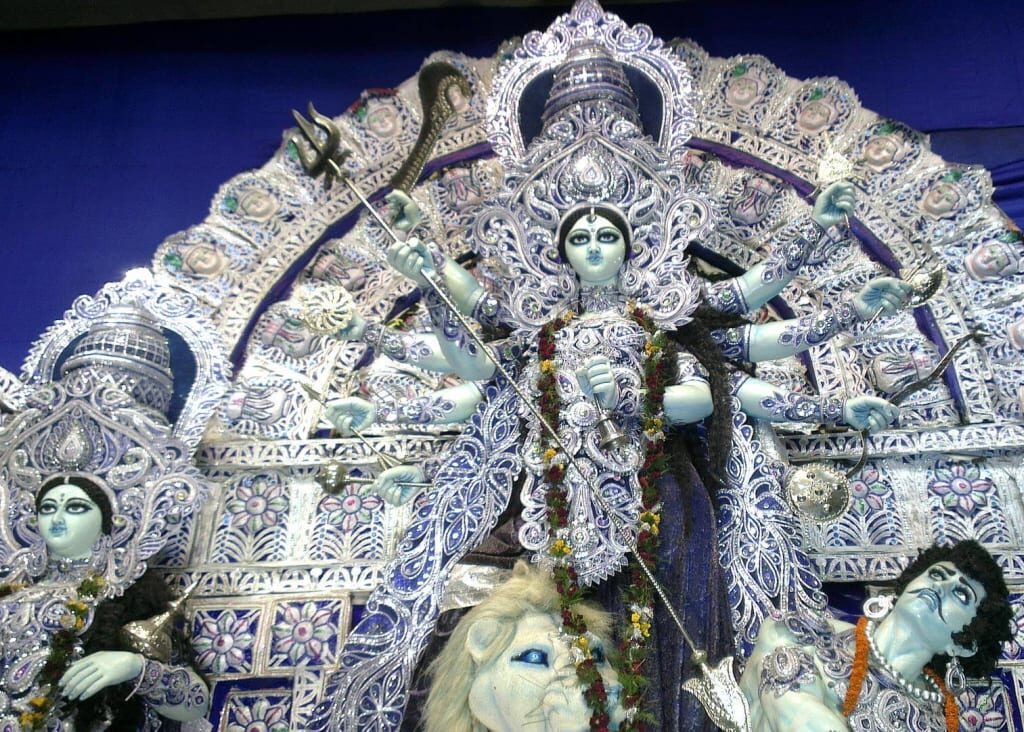
Durga Puja
The largest festival to take place in Kolkata and West Bengal is celebrated in September or October with much grandeur by the Bengalis. It commemorates the victory of the goddess Durga over the buffalo demon Mahishasura, and is a ten-day event, during which large and beautiful idols of the goddess Durga, with her ten arms, are created and then placed in temples and under pandals (canopies) throughout the city of Kolkata.
On the final day of the festival, statues of the goddess are carried aloft through the city then plunged into the Hooghly River. This ceremony marks the end of the goddess’s annual sojourn to her paternal home and return to her husband Lord Shiva.
Krishna Janmashtami
The annual Janmashtami festival is celebrated across India to honor the birthday of Lord Krishna. It usually falls in August or September and lasts for two days. People fast throughout the day and break it with a special meal after dusk, and often, small children dress up like Lord Krishna on this day, while images of Krishna’s life story are depicted in jhankis (crib scenes and other decorations) in temples.
On the second day of the festival, the highlight, Dahi Handi, takes place. People form a human pyramid to reach the clay pots of yoghurt strung up from tall buildings. If you wish to witness this fun activity, then Mumbai is the place to go because Dahi Handi competitions take place at hundreds of locations across the city.
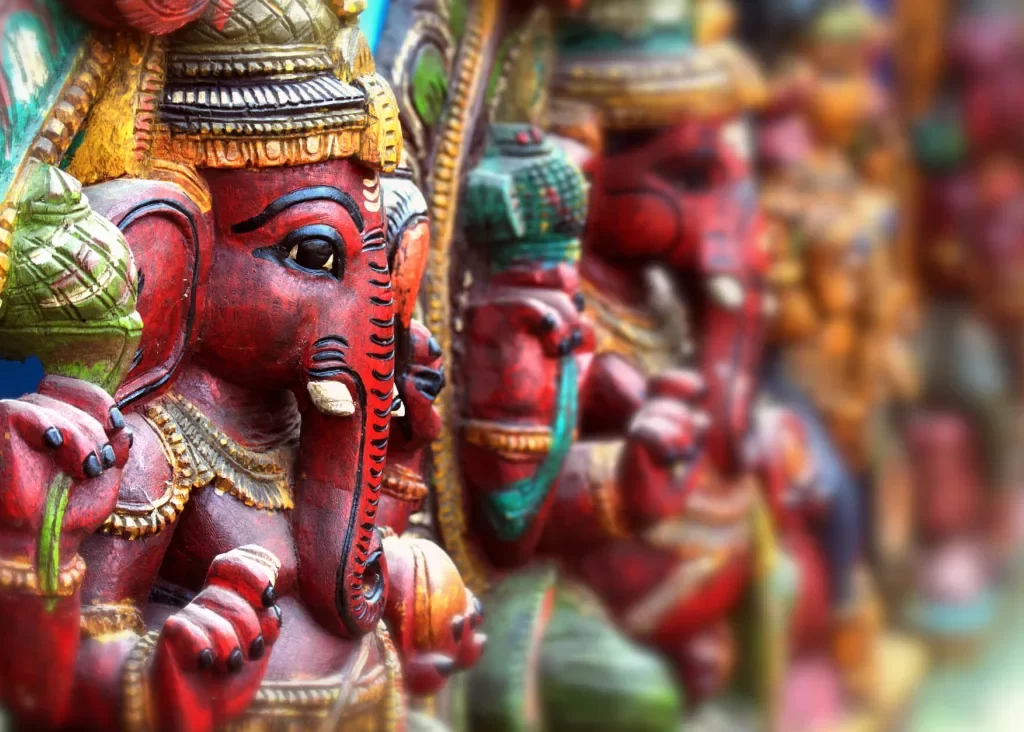
Ganesh Chaturthi
Ganesh Chaturthi, another one of the important Hindu religious festivals of India is a ten-day affair to celebrate the birthday of Lord Ganesh, the elephant headed Hindu god of wisdom, success, and good luck; he is the remover of obstacles and god of making things happen. Although Ganesh is a beloved deity all across India, the city of Mumbai holds a particular love for him and throws a huge festival in his honor every year, with huge, handcrafted statues of the god displayed in pandals (temporary shrines) or temples throughout the city.
Every neighborhood in Mumbai competes to make the best and most beautiful statue of Ganesh. Throughout the festival, each statue is given offerings and is celebrated with religious rituals until the final day when all the statues are carried to the ocean and submerged. Placing the statues in the sea symbolizes Lord Ganesh leaving Earth and returning to the heavens.
The Elephant Festival
Celebrated in the month of March, this Indian festival of painted elephants is one of the most popular events in Jaipur. The animals are draped with jewellery, ear danglers and scarves to embellish their ears and necks. Their foreheads are decorated with head-plates and their tusks are garnished with gold, silver bracelets and rings.
They are given majestic multicolor makeovers, complete with pedicures, and anklets for the female elephants, which tinkle as they walk in procession through the streets. Later they race, play elephant polo and take part in a human versus animal tug-of-war.
Hemis
This two-day religious festival from Ladakh, attracts a lot of locals and foreign tourists each year. Among the festivities, and not to be missed, is the Cham dance performed by the priests to the traditional music of cymbals, drums and trumpets played by the monks.
Republic Day
While India’s Independence Day celebrates the country’s freedom from British Rule in 1947, Republic Day commemorates the adoption of the country’s constitution in 1950. It is celebrated with great pride, patriotism and excitement on 26th January every year.
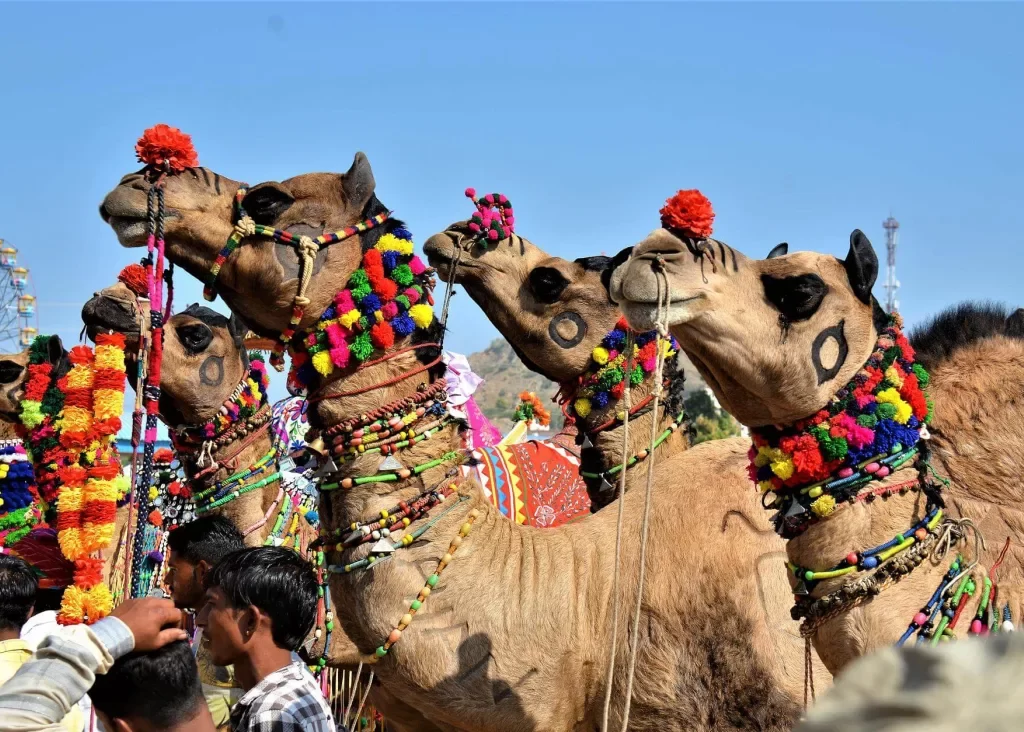
Pushkar Camel Fair
Held each November at the time of the full moon, the Pushkar Camel Fair in Rajasthan is an annual week-long carnival hailed as one of India’s most highly-acclaimed travel experiences. It is a spectacle on an epic scale, which attracts thousands of camels, horses and cattle, and sees farmers and camel breeding communities, trekking sometimes hundreds of miles from their remote villages to trade their animals.
Attended by over 400,000 people, the gathering offers visitors a once-in-a-lifetime opportunity to witness the color, marvel and carnival of one of the last great traditional melas.
Ratha Yatra
The Ratha Yatra, or Chariot procession, is an annual Hindu celebration associated with Lord Jagannath celebrated best in the holy city of Puri in Odisha. Believing attendance to be a gateway to heaven, this annual festival held in June or July (the exact date is the second day of the waxing moon cycle during the Hindu calendar month of Ashadha Masa) attracts pilgrims in their millions.
The festival reenacts the sacred journey of three deities in fact, Lord Jagannath with his elder brother, Lord Balabhadra, and sister, Devi Subhadra, from the Jagannath Temple via the Mausi Maa Temple (his maternal aunt’s home) to the Gundicha Temple, where they stay for nine days before their return journey (known as Bahuda Yatra). After a ‘king’ has swept the route with a golden mop, three huge chariots containing the sibling deities in idol form–with Lord Jagannath’s the biggest–make their way through the never-ending crowds.
It is believed the English word juggernaut is derived from Jagannath given the immensity of his chariot, and also that the festival is the oldest chariot procession in the world, having been documented in puranas–undated Hindu sacred texts–thought to have been written thousands of years ago.
